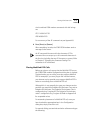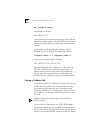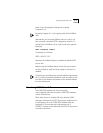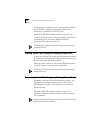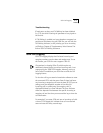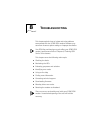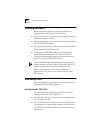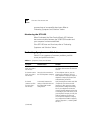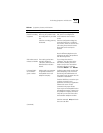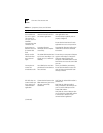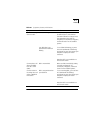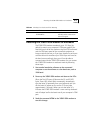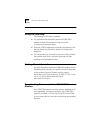
Monitoring LEDs 8-3
Monitoring the D Channel LED
Observe the D channel LED. If you are connected to a live
digital ISDN line, the D channel LED remains lit for a few
minutes after the self-test and then begins to flash. When the
D channel LED flashes, it indicates that the ISDN signal is
present and it is attempting to synchronize with the
telephone company.
When the D channel LED goes out, it indicates that a valid
communication channel has been established and you can
place calls. If the D channel LED does not go out, refer to the
“Evaluating Symptoms and Solutions” section.
Monitoring the B Channel LEDs
Attempt to place a call and observe the B channel LED(s). The
B1 and B2 LEDs flash amber for a voice call or green for a
data call during the call establishment phase. They then
remain continuously amber or green once the connection is
established. If they do not remain continuously amber or
green, refer to the “Evaluating Symptoms and Solutions”
section below.
Monitoring the SD LED
When flashing, the Send Data LED indicates that information
is being transmitted over the serial data port from the
computer to the 3C882 ISDN Modem.
If this LED flashes and yet you are not able to communicate
with the ISDN modem, you may be attempting to
communicate at incompatible baud rates. Refer to “Restoring
the 3C882 ISDN Modem to Autobaud” below.
Monitoring the RD LED
When flashing, the Receive Data LED indicates that
information is being transmitted over the serial data port to
the computer from the 3C882 ISDN modem.
If this LED flashes and yet you are not able to communicate
with the 3C882 ISDN modem, you may be attempting to



